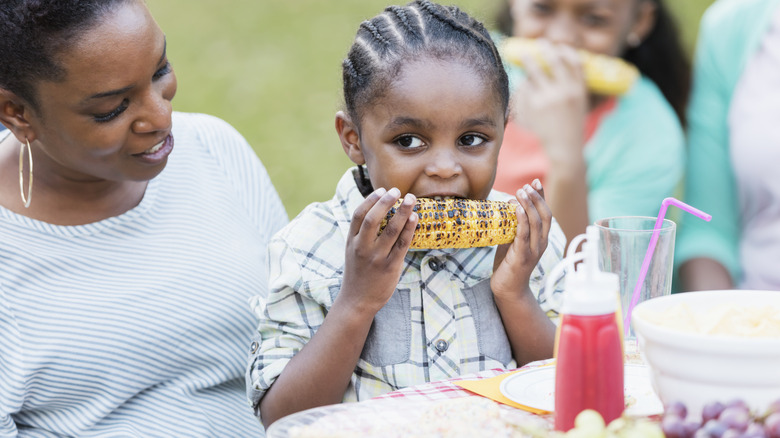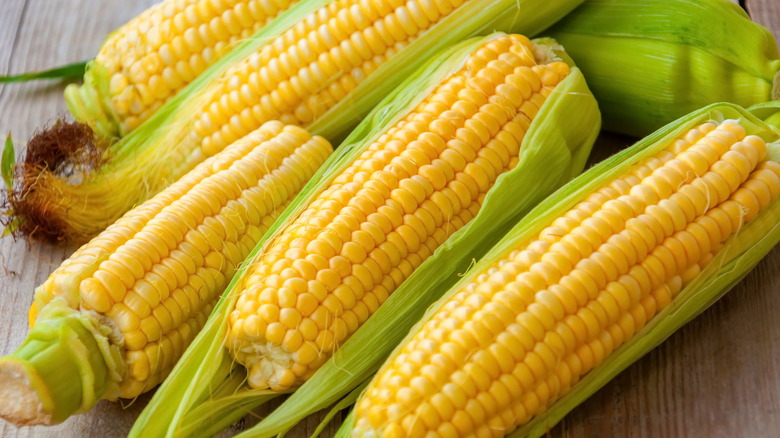The Cooling Mistake You Need To Avoid For Freshly Cooked Corn
Fresh corn is at its best right after cooking, so you naturally want to dig in as soon as possible. However, don't let your hunger lead you down the wrong path, such as placing a hot cob under a running faucet to cool it immediately. While this trick will decrease the temperature quickly, it will also contribute to a soggy, unpleasant texture that will make you vow to become a more patient person overall. Instead, let the temperature reduce naturally by giving the corn cobs time to rest.
In most cases, the corn should be sufficiently cooled down in about ten minutes or so. You should still check the temperature prior to eating to make certain that it's not too hot. Then, you can either use convenient corn skewers to enjoy kernels fresh off the cob, or you can trim the cob using a knife and serve corn in a bowl.
Corn is undeniably tasty, but it also has a lot to offer regarding nutrition. And, you can make certain that all the important vitamins and nutrients are properly retained when you use the right cooking method.
Boiling vs. steaming corn
Corn is rich in vital nutrients such as B vitamins, zinc, magnesium, copper, iron, and manganese and so is a food staple that supports wellness by enhancing digestion and promoting healthy vision. However, boiling corn reduces much of its nutritional impact, which is why fresh corn is best prepared steamed instead of boiled.
While it's definitely an effective cooking method, boiling can lead to loss of nutrients. Instead of being retained in whatever you're cooking, vitamins and minerals will flow into the water where they're being cooked, which typically ends up being discarded. Additionally, the vitamin C in corn is water-soluble, which means it breaks down in water. As a result, you're doing your health a real disservice by boiling corn. And, when it comes to the flavor and texture of fresh corn, you'll also be doing your appetite a real disservice by removing the husks prior to steaming.
Why cooking in the husk yields the best corn
While it's commonplace to remove corn husks prior to cooking, it's best to leave them intact if you want the healthy side dish to be as flavorful as possible. Steaming corn within the husk prevents moisture from escaping, while also locking in the fresh flavors. Also, consider that removing the husks after corn has been cooked is usually a much easier process than trying to do the same while the corn is dry.
As for steaming your husk-covered corn, you'll need a pot large enough to allow the cobs to stand on one end. Next, take the pot and pour in about two inches of water. Lean corn cobs against the side of the pot so they're relatively stable, as you don't want the corn lying on its side in the water while it cooks. Leave the pot uncovered until it reaches a full boil, at which point you can place the lid on it. Don't forget to add water as the corn steams to account for evaporation. The corn should be ready to husk and eat after approximately 20 minutes, but don't forget to factor in some time for cooling.


